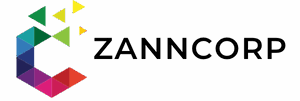Table of Contents
ToggleImagine a world where your fridge knows when you’re out of milk and your thermostat adjusts itself based on your mood. Welcome to the Internet of Things (IoT), where everyday objects are getting smarter and more connected. As technology evolves, so does the IoT market, growing at a pace that would make even the fastest cheetah envious.
With projections showing the IoT market size skyrocketing into the trillions, it’s clear that businesses are hopping on this digital bandwagon. From smart homes to industrial applications, the potential is vast and exciting. Buckle up as we dive into the numbers and trends shaping the future of IoT, and discover why this is one market you won’t want to miss.
Overview of IoT Market Size
The Internet of Things (IoT) market rapidly expands, driven by increased connectivity and technological advancements. As of 2023, the global IoT market size reaches approximately $478 billion, with projections showing it could exceed $1.5 trillion by 2030. Organizations across sectors adopt IoT solutions to enhance efficiency and gain insights.
Significant growth appears in various industries. Healthcare utilizes IoT devices for remote monitoring and patient management. Retail integrates IoT for inventory tracking and customer engagement. Agriculture benefits from smart farming technologies that increase crop yields.
Various factors fuel this growth. The expansion of 5G networks improves connectivity and enhances IoT capabilities. Businesses increasingly recognize the value of data-driven decision-making. Government initiatives support IoT development through infrastructure investments.
Diverse applications contribute to the market’s breadth. Smart homes feature connected devices for security, climate control, and home automation. Industrial IoT leads to smart manufacturing, predictive maintenance, and supply chain optimization. Smart cities leverage IoT for traffic management and energy efficiency.
Regional growth patterns demonstrate varying market dynamics. North America holds the largest market share, largely due to technological advancements and early adoption. Asia Pacific shows rapid growth, spurred by rising populations and urbanization. Europe focuses on regulatory compliance and sustainability, impacting IoT adoption rates.
Market participants include numerous established firms and startups. Key players such as IBM, Cisco, and Microsoft drive innovation and expansion. Emerging startups introduce niche solutions, contributing to a competitive landscape.
The IoT market evolves quickly, with multiple growth drivers and applications shaping its future. Understanding current market size and trends reveals opportunities for businesses and investors.
Factors Influencing IoT Market Size
Several factors drive the growth of the IoT market. Technological innovations and industry demands significantly impact market size and expansion.
Technological Advancements
Rapid advancements in technology enhance the IoT landscape. High-speed 5G networks enable seamless connectivity for devices, facilitating real-time data exchange. Machine learning and artificial intelligence play crucial roles by enhancing device autonomy and efficiency. As companies adopt cloud computing, storage solutions become more accessible, allowing for extensive data processing. Increased investment in cybersecurity solutions also supports the growth of IoT infrastructure. By prioritizing these technologies, businesses create a robust foundation for future developments, driving overall market growth.
Demand from Various Industries
Various industries contribute to the expanding IoT market. In healthcare, IoT devices monitor patient health, improving outcomes through timely interventions. Retail businesses leverage IoT for inventory management, enhancing customer experiences with personalized services. Agriculture benefits from smart farming technologies, optimizing resource use and increasing yields. Transportation sectors utilize IoT for fleet management, enhancing efficiency and reducing costs. As sectors explore innovative applications, the demand for IoT devices steadily rises, propelling market growth.
Regional Breakdown of IoT Market Size
The IoT market varies significantly across regions, reflecting differences in technology adoption and investment.
North America
North America dominates the global IoT market, accounting for the largest share due to advanced technological infrastructure and strong investment in smart technologies. The region’s market size reached approximately $195 billion in 2023 and is projected to grow steadily. Factors such as the presence of major players like Cisco and IBM drive innovation. Furthermore, government initiatives promote smart cities and industries, boosting adoption rates. The healthcare sector heavily utilizes IoT for improved patient care and monitoring.
Europe
Europe’s IoT market follows closely behind, valued at around $120 billion in 2023. The region experiences growth from widespread adoption in industries like transportation, manufacturing, and energy management. Stringent regulations regarding data security and privacy shape how businesses implement IoT solutions. Notable companies such as Siemens and Bosch lead efforts in developing smart devices and services. European nations invest heavily in sustainable IoT applications, aligning technology adoption with environmental goals.
Asia-Pacific
Asia-Pacific showcases rapid expansion in the IoT market, with a valuation of approximately $85 billion as of 2023. Urbanization and increased smartphone penetration significantly contribute to this growth. Countries like China and India lead the pack due to their focus on smart city initiatives and agricultural applications. Additionally, local startups drive innovation, creating unique use cases that cater to regional needs. The launch of 5G networks further strengthens connectivity, fostering new business models and opportunities across various sectors.
Future Trends in IoT Market Size
The IoT market continues to evolve, with several trends shaping its future landscape.
Growth Projections
Market analysts forecast significant expansion in the IoT sector. Expectations suggest the global market will surpass $1.5 trillion by 2030, reflecting a robust compound annual growth rate. The healthcare sector leads growth due to increasing usage of connected devices. Retail and agriculture also show promising potential through enhanced customer interactions and efficiency. Smart city initiatives in Asia Pacific drive rapid development, particularly in countries like China and India. With substantial investments in infrastructure and technology, the North American market remains a catalyst for innovation. Companies seeking to capitalize on growth opportunities can leverage emerging technologies for a competitive edge.
Challenges Ahead
Despite promising projections, the IoT market faces challenges that could hinder growth. Security concerns rank among the top issues as data breaches become more prevalent. Regulations surrounding data privacy create additional complexities for businesses to navigate. Limited standardization across devices and platforms may impede interoperability, leading to inefficiencies. Moreover, high deployment costs can deter smaller enterprises from adopting IoT solutions. Supply chain disruptions have also presented obstacles, impacting hardware availability. As companies strategize to mitigate these challenges, maintaining a focus on security, compliance, and cost-effectiveness is crucial.
Conclusion
The IoT market is poised for remarkable growth as it transforms industries and enhances daily life. With advancements in technology and increasing investments driving innovation, the potential for smart devices is vast. Companies that adapt to these changes and prioritize security and compliance will find themselves well-positioned to thrive.
As the market evolves, staying informed about emerging trends and regional dynamics will be essential for stakeholders. The journey ahead promises exciting opportunities as the interconnected world continues to expand, shaping the future of technology and consumer experiences.





